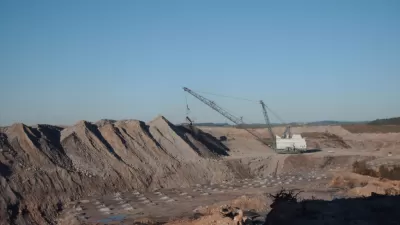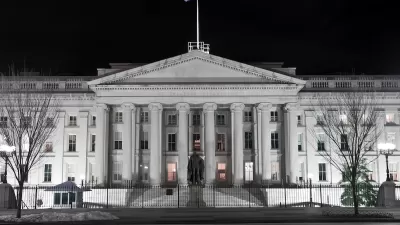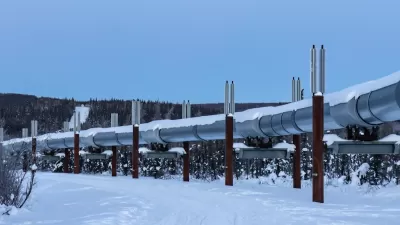Small cities are an asset to the country, so politicians and thinkers on the left and right would do well to stop calling for their inhabitants to flee, Henry Garbar argues in Slate.

Differences in wages and quality of life have people from columnists to President Trump himself asking why people don't just move. "The plight of post-industrial cities like Buffalo, New York, as well as rural communities in Appalachia and the South, is also being dismissed by thinkers on the left and the right," Henry Garbar writes for Slate.
Garbar argues there are good reasons why people are moving less. "This is not as easy as it sounds: Yale law professor, David Schleicher, has laid out three issues that have contributed to Americans’ declining geographic mobility: zoning restrictions that raise housing prices in coastal cities, occupational licensing requirements that make it hard for professionals to cross state lines, and welfare benefits that are difficult to take from place to place," Garbar writes.
How could small cities be saved? Garber points out an idea from Vox's Mathew Yglesias suggesting that moving some government agencies out of D.C. could have a big impact elsewhere, "Time to shift economic activity from the overcrowded coasts to places that need more of it," Yglesias writes. Immigrants and refugees might be motivated to move to these cities. "Michigan Gov. Rick Snyder had earlier discussed getting the Obama administration to offer 50,000 visas for high-skilled migrants to come to Detroit. But Snyder’s plan was dubious—how could you force visa recipients to stay in Detroit?—and the Laitin-Jahr idea was impossible because America hasn’t even accepted one-third that number of Syrian refugees since the war began," Garbar reports.
It's worth the effort though, Garbar contends, not just because small cities serve as a hedge against the troubles larger cities might have in the future, but also because the future prospects of a city can be hard to guess, few predicted New York's comeback in the '80s. What's more, these cities effort distinct advantages. "They’re small enough for regular people to participate in politics and make a mark on civic life; small enough for responsive, local ownership over institutions and infrastructure like banks, broadband, retail, and food production; small enough for short commutes and easy access to nature," Garbar argues.
FULL STORY: In Defense of the Small City

Study: Maui’s Plan to Convert Vacation Rentals to Long-Term Housing Could Cause Nearly $1 Billion Economic Loss
The plan would reduce visitor accommodation by 25,% resulting in 1,900 jobs lost.

Placekeeping: Setting a New Precedent for City Planners
How a preservation-based approach to redevelopment and urban design can prevent displacement and honor legacy communities.

Using Old Oil and Gas Wells for Green Energy Storage
Penn State researchers have found that repurposing abandoned oil and gas wells for geothermal-assisted compressed-air energy storage can boost efficiency, reduce environmental risks, and support clean energy and job transitions.

Washington State Plans Ambitious ‘Cycle Highway’ Network
The state is directing funding to close gaps in its existing bike network and make long-distance trips more accessible.

Homeowners Blame PG&E for Delays in ADU Permits
The utility says it has dramatically reduced its backlog, but applicants say they still face months-long delays for approvals for new electrical work.

Rethinking Wildfire Defense: How a Landscape Approach Can Protect Neighborhoods
Post-fire analysis of the Eaton Fire reveals that a landscape approach — including fire-resistant vegetation, home hardening, and strategic planning — can help reduce wildfire risk, challenging assumptions that trees and plants are primary fire hazards.
Urban Design for Planners 1: Software Tools
This six-course series explores essential urban design concepts using open source software and equips planners with the tools they need to participate fully in the urban design process.
Planning for Universal Design
Learn the tools for implementing Universal Design in planning regulations.
Borough of Carlisle
Caltrans
Heyer Gruel & Associates PA
Institute for Housing and Urban Development Studies (IHS)
City of Grandview
Harvard GSD Executive Education
Salt Lake City
NYU Wagner Graduate School of Public Service
City of Cambridge, Maryland





























